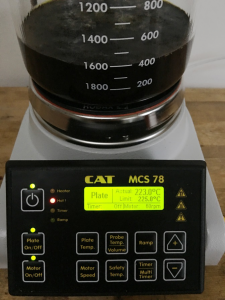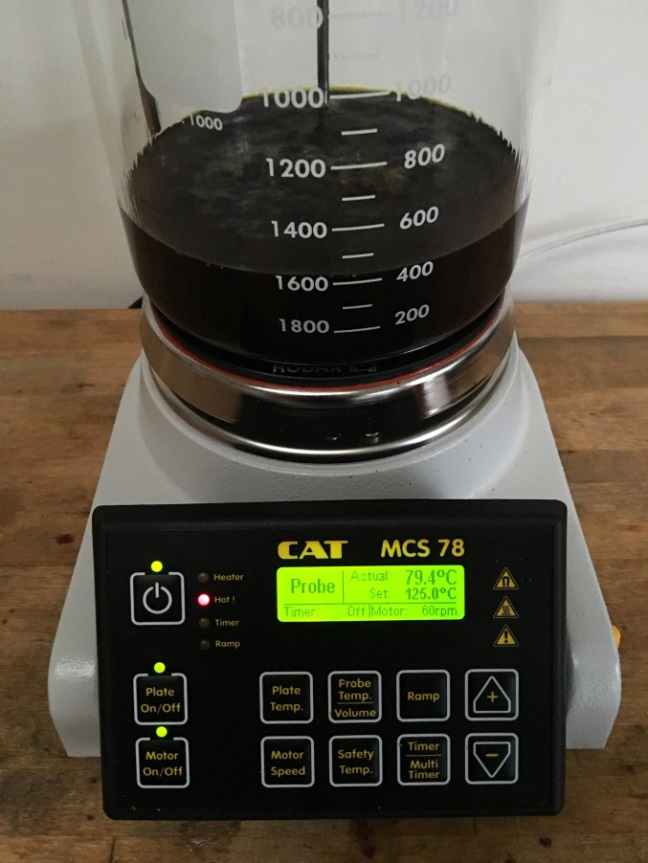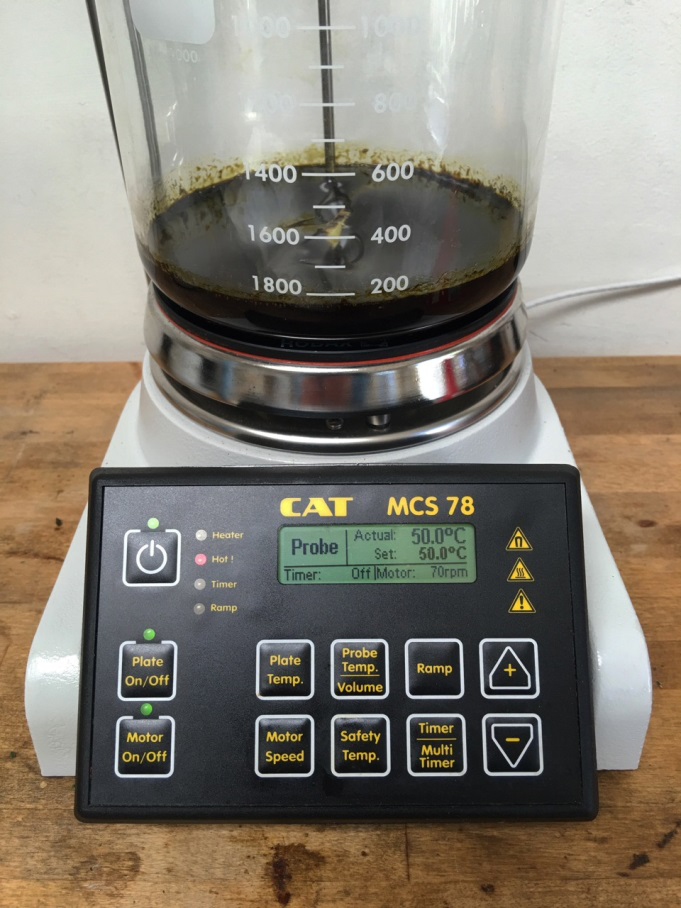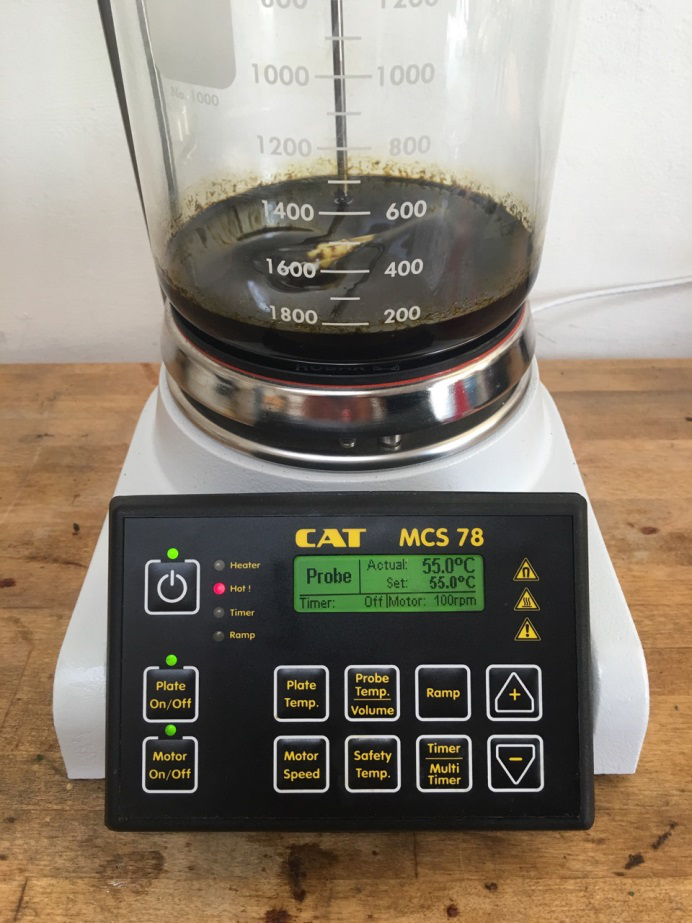How to Purge Ethanol from Cannabis Oil Using the CAT MCS78 Hotplate Stirrer

Note: This process works for both winterized product and for an Ethanol extraction.
In the following example, total volume of Ethanol-cannabis oil, 400ml.
The first step in the process of purging Ethanol from cannabis oil is to remove the bulk of Ethanol from the solution. This could take some time depending on volume.
1. Set the Probe Temp on the CAT MCS78 to 125°C., and the Plate Temp to 225°C or higher if the volume you’re working with is greater than 500ml.
2. Set the Motor Speed between 60 to 70 rpm’s or higher depending on solution viscosity.
3. While the boiling point of Ethanol is 79.4°C, the Probe Temp is set at 125°C, otherwise if set at 79.4°C, (Ethanol boiling point) the MCS78 would automatically adjust the hotplate, the solution temperature-Probe Temp would reach 79.4°C slowly, so as not to overshoot set Probe Temp, and you’d have a weak boil, rather than a roiling boil, which is optimal for this process.
4. The Probe Temp-solution temp will not surpass 79.4°C, depending on atmospheric conditions until most of the Ethanol has evaporated off. When the solution temperature- Probe Temp reaches 85°C, set the Probe Temp to 50°C. You don’t have to reset the Plate Temp; it automatically adjusts after you set the Probe Temp.
5. Once the solution temperature- Probe Temp reaches 50°C, add 10 drops of distilled water for every 20mls of oil mixture. Process the solution for an hour.
6. After the solution has processed for an hour, set the Probe Temp to 125°C. When the solution temp-Probe Temp passes 90°C, some decarboxylation and water evaporation start to occur; the solution will begin to bubble as the Probe Temp-solution temp rises. The small bubbles form as C02 is boiled off the THC-A. This is an indication of decarboxylation.
7. When the decarboxylation process has been completed, all bubbling stops, set the Probe Temp to 55°C, and process for 48 hours. After processing there should be only trace elements of Ethanol, 54-32ppm. We winterized two batches of C02 extractions for this experiment, one with 200 proof Ethanol and the other, 190 proof. 200 Proof Residual Solvent Analysis. 190 Proof Residual Solvent Analysis.
Disclaimer- Assumption of Risk:
Using the CAT MCS78 Hotplate Stirrer to purge residual Ethanol from cannabis extract or an Ethanol extraction carries inherent risks that cannot be eliminated regardless of the care taken to avoid such risks. The specific risks include, but are not limited to: minor bodily injury, major bodily injury; death; loss of or damage to property. You understand and appreciate the risks inherent in this process, including but not limited to those set forth herein, and you hereby assert and agree that operating the CAT MCS78 Hotplate Stirrer for this process is voluntary and that you knowingly assume all such risks.





What would have the residual have been without the stirring? Can you just do a rough clean and leave the rest for the next batch?
Over 5,000 PPM.
Can you clarify rough clean?
In instruction it says that 400ml is tested. I found that 3.5L could be processed at once from another source. .What is the max volume of oil could be processed at once? Oil is getting dark when heat is applied and because of oxidation. Is it possible to mimic this scenario with help of vacuum.
A few questions –
1.What would you estimate the ppm ethanol are after decarboxylation and prior to 48 hr process?
2. I would assume the oil is, at that point, already ready or close to be ready for oral use and that alcohol content would be quite low, correct?
3. Is the danger of evaporating 190 proof alcohol like this real or primarily theoretical? Without an open flame I am assuming there is little to no risk or vapors combusting and most of talk around that happening is largely theoretical and not from reports of it actually occurring?
Thanks!
great questions.
from my experience with RSO those 48 hours seem unnecessary
also, the Hotplate Stirrer looks good. add a top that reclaims the alcohol and it will be perfect.